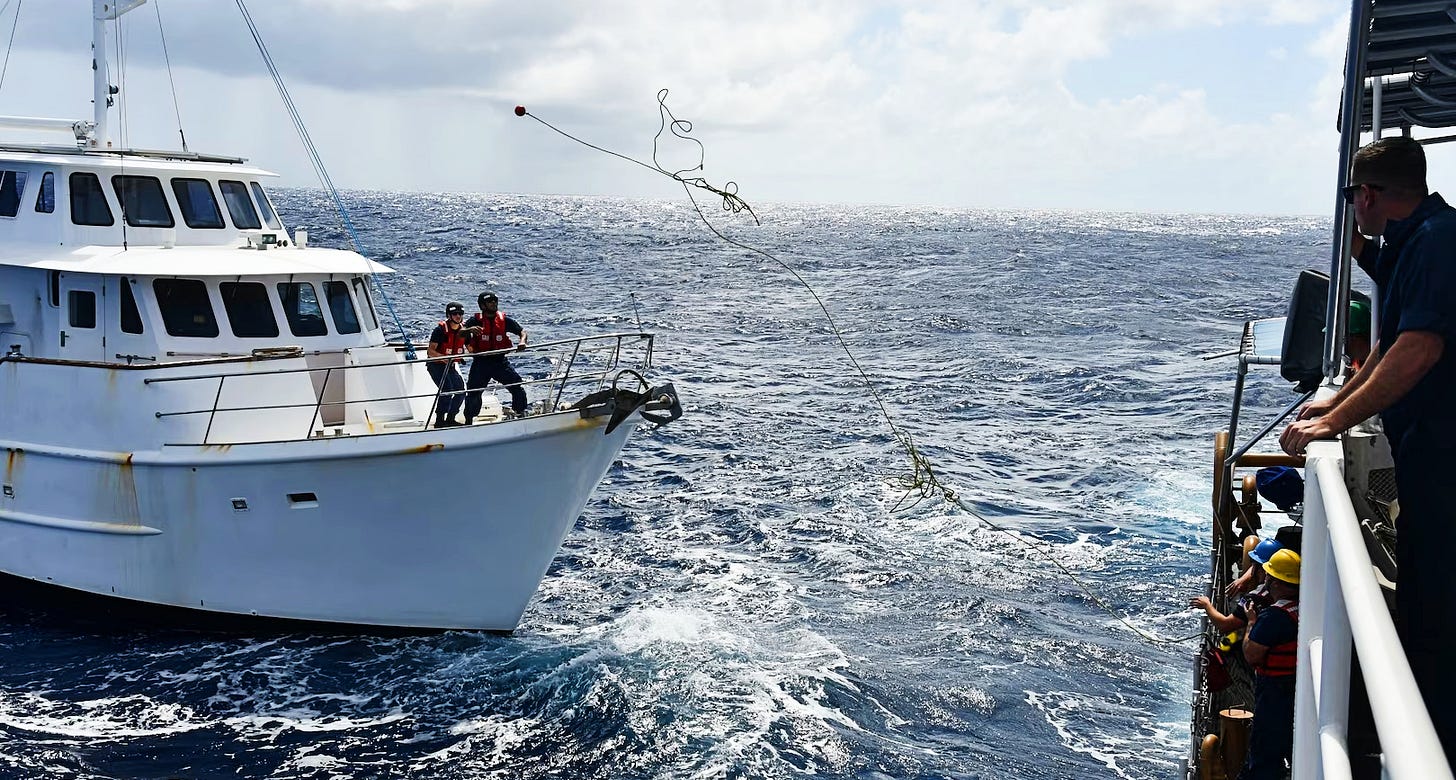Renown Ocean-Crossing Trawler Reaches Hawaii, Just Not the Way Its Designers Intended
Adrift Due to an 'Almost Impossible' Fuel Fail, 'Eden Bound' Gets Towed Home

Updated with new information from the boat’s owners.
Their trawler is famous for having been built from the keel up for transoceanic passages, so Eden B…
Keep reading with a 7-day free trial
Subscribe to LOOSE CANNON to keep reading this post and get 7 days of free access to the full post archives.


